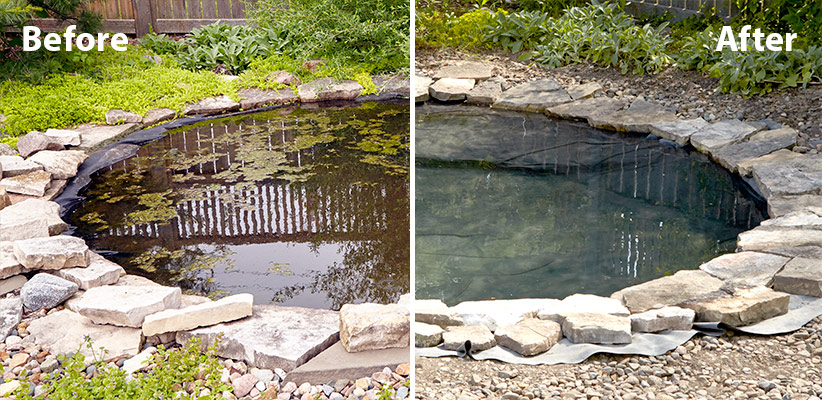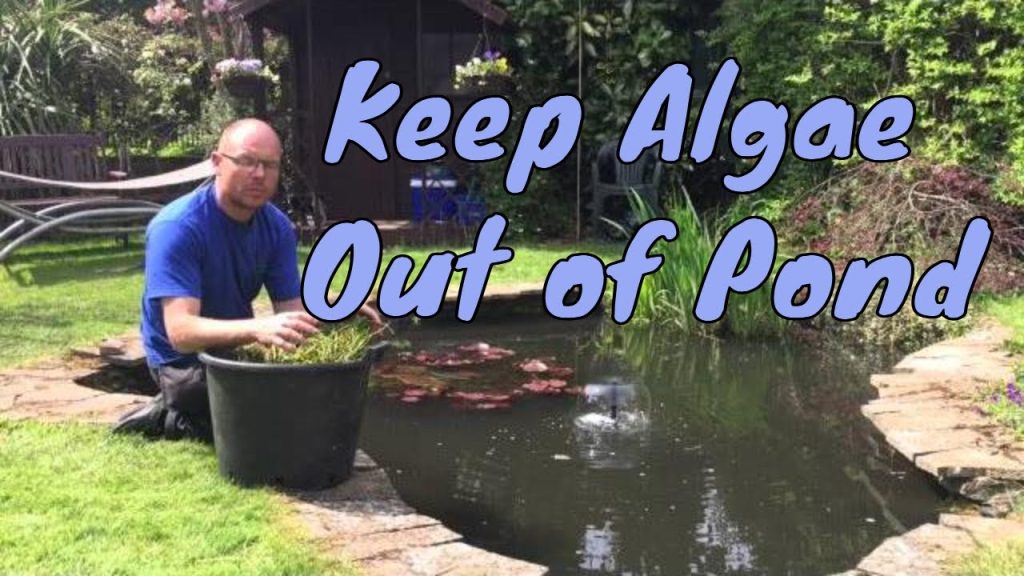Algae can be a common issue that pond owners face, but there are several effective ways to prevent algae growth and keep your pond water clear and healthy. In this comprehensive guide, we will explore various methods and strategies to help you maintain a beautiful and algae-free pond environment.
5 Best Pond Cleaner – Muck, Algae, And Sludge Remover
Understanding Algae
Algae are simple, plant-like organisms that can quickly multiply in ponds when conditions are favorable. There are different types of algae, such as green algae, blue-green algae, and string algae, that can make your pond water murky and unattractive. While some algae are beneficial and play a role in the pond ecosystem, excessive algae growth can disrupt the balance and harm other aquatic life.

Credit: www.gardengatemagazine.com
Effective Ways to Prevent Algae Growth
Preventing algae in a pond involves a combination of proactive measures and regular maintenance. Here are some strategies to help you keep algae at bay:
1. Proper Filtration
Invest in a good quality filtration system for your pond to help remove excess nutrients and debris that can fuel algae growth. Mechanical filters and biological filters can help maintain water clarity and reduce algae blooms.
2. Adequate Aeration
Aeration is essential for maintaining oxygen levels in the pond water and promoting the growth of beneficial bacteria that compete with algae for nutrients. Consider adding an aerator or fountain to improve water circulation.
3. Sunlight Management
Limiting sunlight exposure in your pond can help prevent algae growth. Planting shade-providing trees or adding floating plants like water lilies can help create shaded areas and reduce the intensity of sunlight reaching the water.
4. Regular Maintenance
Perform routine maintenance tasks such as cleaning debris, trimming plants, and removing excess algae manually to prevent nutrient buildup and algae overgrowth. Regular water testing can also help you monitor water quality and make adjustments as needed.
5. Beneficial Plants
Introducing aquatic plants like water hyacinths, duckweed, and hornwort can help absorb excess nutrients from the water and compete with algae for resources. These plants not only add beauty to your pond but also contribute to its overall health. By the way, if you want to know if duckweed is good for the pond or not then check our article where we discussed about that.
6. Fish Population Control
Maintain a balanced fish population in your pond to avoid excessive fish waste that can contribute to algae growth. Consider the size of your pond and the types of fish you have to prevent overcrowding and maintain water quality.
7. Chemical Treatments
While chemical treatments should be used as a last resort, there are algae-control products available that can help reduce algae growth in ponds. It is important to follow the manufacturer’s instructions carefully and use chemicals sparingly to avoid harming fish and other aquatic life.
Frequently Asked Questions
Q: What causes algae to grow in a pond?
A: Algae growth is typically caused by excess nutrients (like nitrogen and phosphorus), sunlight, warm temperatures, and stagnant water.
Q: How can I naturally prevent algae in my pond?
A: Natural methods include adding aquatic plants, maintaining proper fish stocking levels, and using beneficial bacteria to outcompete algae for nutrients.
Q: Do pond plants help prevent algae?
A: Yes, aquatic plants absorb nutrients that algae would otherwise use to grow, helping to prevent algae blooms.
Q: How often should I clean my pond to prevent algae?
A: Regular maintenance, including removing debris and excess organic matter, should be done monthly or as needed to keep nutrient levels low.
Q: Can fish help control algae in a pond?
A: Certain fish, like koi and goldfish, can help control algae by eating it, but overstocking fish can also increase nutrient levels, promoting algae growth.
Q: What role do beneficial bacteria play in preventing algae?
A: Beneficial bacteria break down organic matter and reduce nutrient levels in the pond, making it harder for algae to thrive.
Q: Is it necessary to use a pond aerator or fountain to prevent algae?
A: Yes, aerators and fountains help circulate the water, reducing stagnation and oxygen levels, which can inhibit algae growth.
Q: What chemical treatments are available to prevent algae in a pond?
A: Chemical treatments include algaecides, but they should be used sparingly and as a last resort, as they can harm aquatic life and disrupt the pond ecosystem.
Q: How does shading the pond help prevent algae?
A: Shading the pond with plants, floating covers, or structures reduces sunlight penetration, which can limit algae growth.
Final Words
Preventing algae in a pond requires a proactive approach and a combination of strategies to maintain water clarity and quality. By implementing proper filtration, aeration, sunlight management, regular maintenance, beneficial plants, fish population control, and, if necessary, chemical treatments, you can create a healthy and algae-free environment for your pond and its inhabitants.





